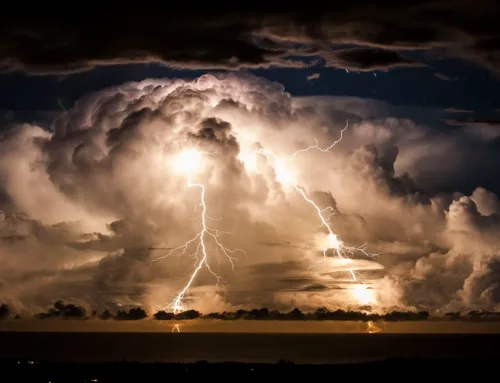Wuhan: the questions China won’t answer about how Covid pandemic started
Beijing has always rejected a link between the pandemic and its virus lab in the city. Now pressure is intensifying on the regime to come clean
Sunday, May 30, 2021
By Madeleine Spence & Matthew Campbell
Reprinted from The Times (London)
1. What really happened in the Wuhan laboratory?
The idea that the virus, which has killed more than 3.5 million people and wreaked havoc in the global economy, may have emerged from the internationally renowned Wuhan Institute of Virology (WIV), rather than through human contact with an infected animal, was once dismissed as a conspiracy theory.
When the idea of a laboratory leak was aired last year it was linked by some of its proponents with claims that the virus was a product of a Chinese biological-warfare programme, but no scientific or intelligence evidence was produced. China’s initial indication that the virus emerged from a Wuhan food market was seen as more plausible — and its subsequent efforts to transfer blame to some unidentified foreign source reinforced the assumption that the market was the source.
Since then, however, greater awareness of the WIV’s research into bat viruses — including one almost identical to the pandemic’s Sars-Covid-2 — has reawakened attention to the possibility that there was an accidental leak from the laboratory.
At the same time, China’s own efforts to show proof of another source for the virus have failed, and its increasingly shrill denials about the WIV have helped to boost suspicions that it is trying to cover up a laboratory leak.
“China’s ongoing cover-up since day one is only adding fuel to the fire,” said Jamie Metzl, adviser to the World Health Organisation (WHO) on human genome editing and a senior fellow with the Atlantic Council think tank. “Since the earliest days following the outbreak China has destroyed samples, hidden records, imprisoned citizen journalists.”
President Biden has given U.S. intelligence agencies 90 days to try to penetrate this secrecy and find out how the virus emerged. They are appealing to western allies, including Britain, for help through a mixture of intelligence work and further scientific investigation. But experts are sceptical about their chances of finding a text message, email or document proving a lab leak — let alone a smoking test tube.
2. Why does China fear the truth?
China severely restricted the scope of a WHO investigation in Wuhan this year. The team was denied access to vital information and personnel and, with no evidence to the contrary, concluded that a leak from the WIV was “extremely unlikely”.
“It was more like a Disneyland tour,” said Larry Gostin, director of the WHO’s Collaborating Centre on National and Global Health Law. Even the WHO’s director-general, Tedros Adhanom Ghebreyesus, often accused of kowtowing to the Chinese, said the study was “not extensive enough”.
China’s announcement last week that it would not co-operate with a second, independent phase of the WHO investigation reinforced the suspicions of some experts that it has something to hide. “An independent inquiry should be in China’s interests,” said Gostin. “If it has nothing to hide, it could absolve it from culpability. But the chances of an inquiry are negligible to zero. China will block it.”
3. Were there security problems at the laboratory?
Adding to suspicions about a possible virus leak are concerns about security at the Wuhan laboratory. After a visit in January 2018, American officials reported their concerns to Washington in diplomatic cables that were then leaked to The Washington Post.
They warned that the WIV lacked the technicians needed to operate the facility securely. They also warned that this could result in a leak of bat virus with the potential to cause a pandemic.
“China is very different to most of the world,” said Anthony Della-Porta, a biocontainment consultant who has worked in biosecurity training in China and investigated laboratory leaks in Taiwan and Singapore as part of a WHO team. “The people in charge of the labs are all members of the party and many of them don’t have the safety training of their scientific staff and they are very much constrained by the need to obey the rules of the Chinese Communist Party.”
4. What was the role of the Bat Lady?
The Wuhan laboratory has a published record of “gain-of-function” research, meaning that it deliberately created more infectious viruses — not as part of some sinister plot to infect the world but to predict what sort of vaccines might be needed against future coronavirus infections.
One of its leading researchers, Shi Zhengli, the so-called Bat Lady, had developed one of the world’s largest databases of bat-related viruses. It emerged that she had at first feared the virus had escaped from her laboratory.
After the outbreak in Wuhan, she pored over records to check for any mishandling of experimental research materials. She breathed a “sigh of relief” when results showed that the sequencing of the new infections did not match those of the viruses her team had sampled, according to Scientific America. “That really took a load off my mind,” she told the magazine. “I had not slept a wink for days.”
That sigh of relief is now in question from the Biden investigation.
5. Was “patient zero” a scientist?
According to U.S. intelligence, three Wuhan laboratory workers became unwell with symptoms “consistent with Covid-19” and required hospital treatment in November 2019, several weeks before the outbreak was reported.
It is not known if the Wuhan laboratory workers who fell ill were infected in the laboratory or elsewhere. But a lab leak would be consistent with a pattern in previous epidemics. According to Della-Porta, a Sars outbreak in Taiwan in 2003 was traced back to a scientist who had failed to clear up a spill while working alone in a high-containment military laboratory. Another in Singapore was a result of a Ph.D. student accidentally handling the Sars virus in a lab.
6. What is China’s link to Peter Daszak?
Daszak, a British zoologist, was a prominent member of the WHO mission that concluded a leak from the Wuhan laboratory was extremely unlikely. He has publicly criticised as “pure baloney” the lab-leak theory in the press and has attacked it in The Lancet, the scientific journal, where he chairs a commission that considers theories on the origins of Covid-19. He is also, however, president of EcoHealth Alliance, a U.S.-based non-profit organisation that has collaborated with and funded the laboratory.
“Daszak has a monumental conflict of interest,” said Metzl. “That he is a member of this international team and The Lancet commission is outrageous.”
Daszak has worked closely with Shi. In 2015 the pair published a paper in the Journal of Virology on research they had conducted at the WIV into “bat Sars-like coronavirus”. The research took place in a biosafety level-two laboratory, which requires only basic protection with lab coats and gloves. It was funded in part by the National Institutes of Health (NIH) of the United States.
Two senior Republican congressmen, James Comer, of the congressional committee on oversight and reform, which is investigating the pandemic’s origin, and Jim Jordan, have begun an inquiry into taxpayer-funded grants issued by the NIH to EcoHealth Alliance, $600,000 of which they claim EcoHealth awarded to the WIV. In a letter addressed to Biden’s chief medical adviser, Anthony Fauci, on May 28, they write: “If U.S. taxpayer money was used to develop Covid-19, conduct gain-of-function research, or assist in any sort of cover-up, EcoHealth must be held accountable.”








Leave a Reply, please --- thank you.